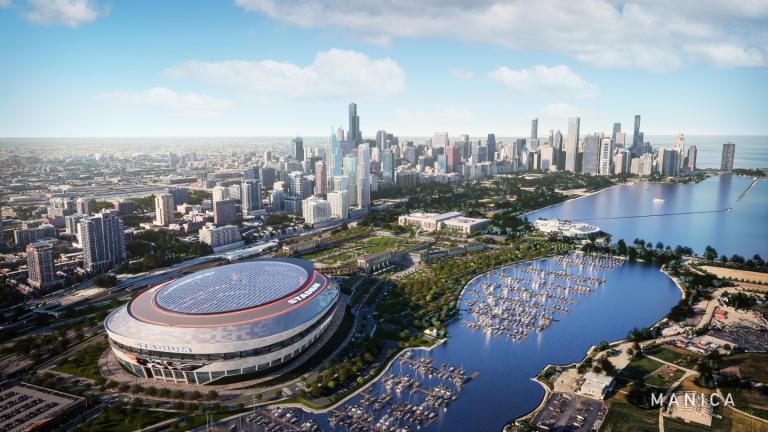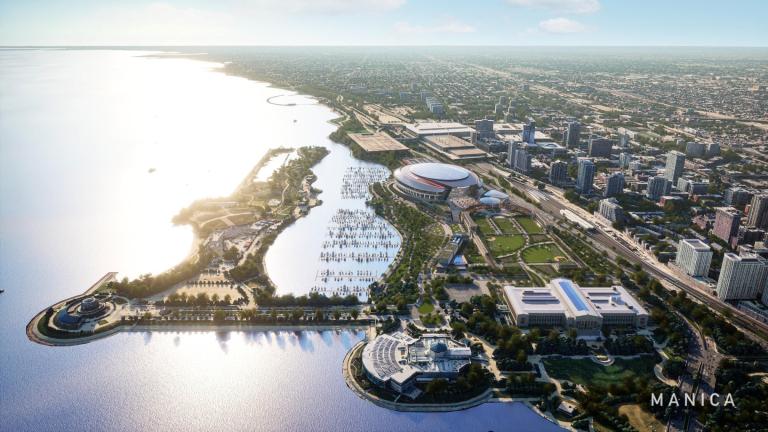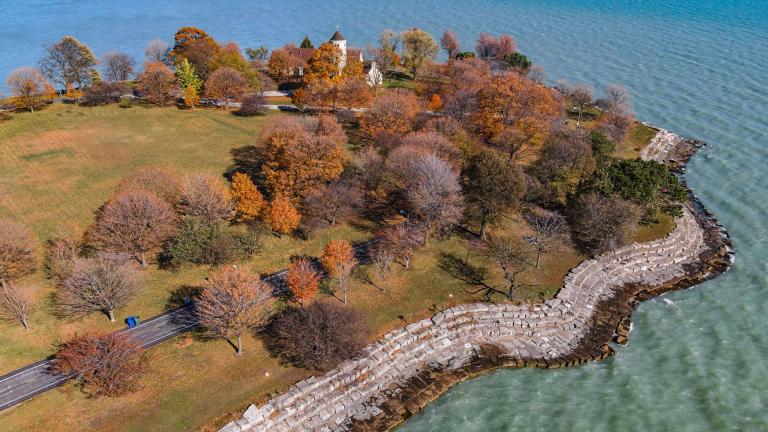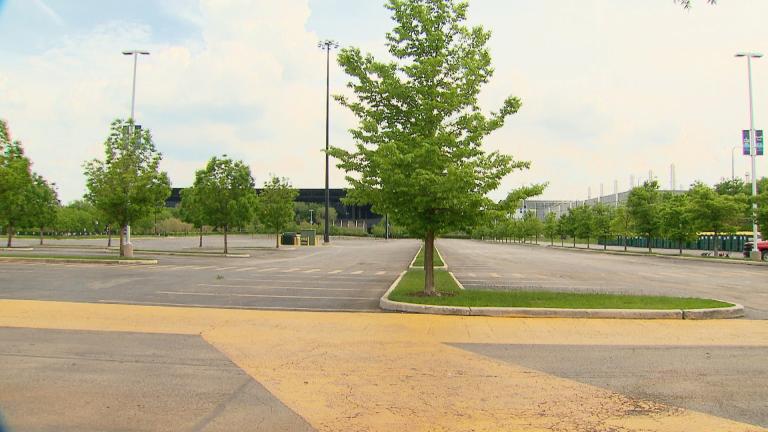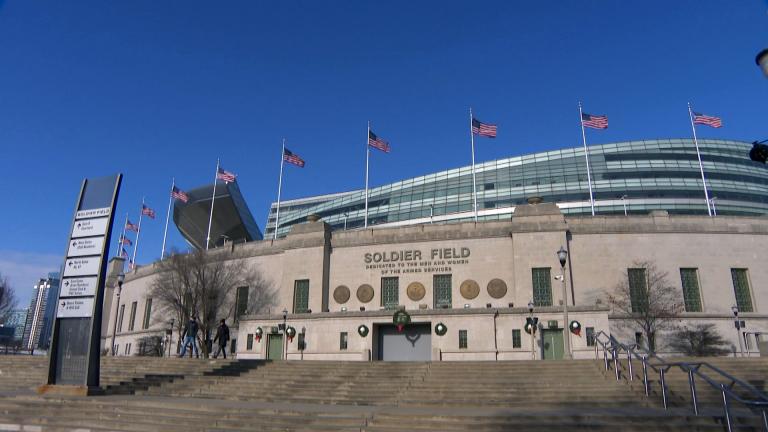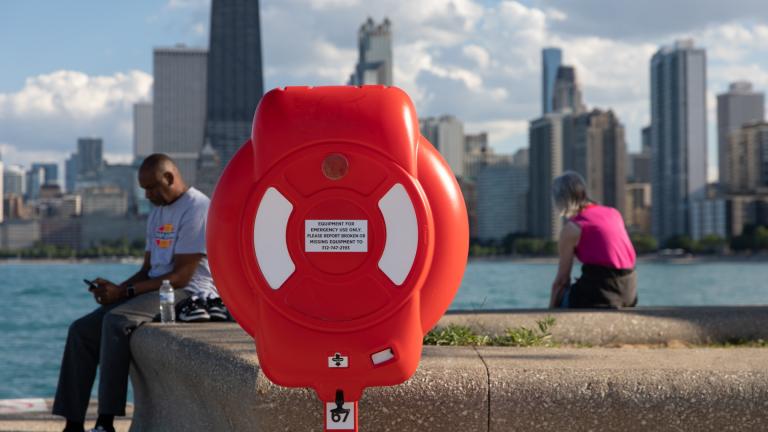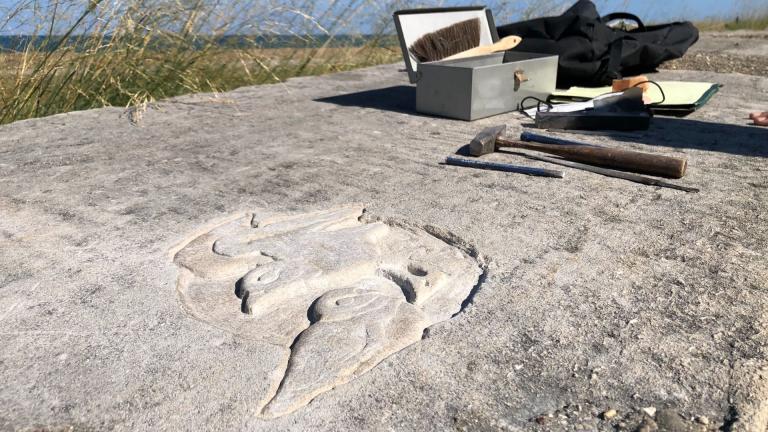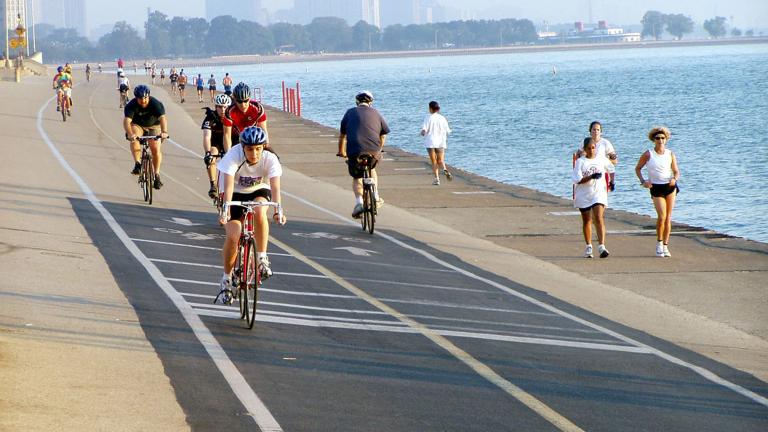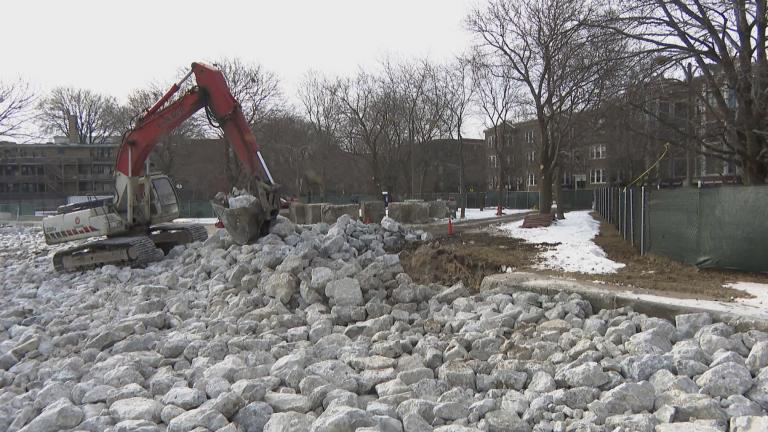While financing for the Chicago Bears’ proposed new lakefront stadium remains in doubt, opponents of the plan have sent an unequivocal “hands off” message regarding any use of lakefront property for private interests.
Chicago Lakefront
Last week’s announcement of a proposed new domed, lakeside stadium brought with it more questions. Namely, the price tag.
An independent engineering study has concluded Promontory Point’s limestone blocks are still functioning as ample shoreline protection, which refutes a longstanding position held by the Army Corps of Engineers.
While the team hasn’t yet released plans, Bears president Kevin Warren stated they would commit over $2 billion to transform the Museum Campus and revamp the surrounding infrastructure — all of which Warren hopes could begin as soon as this year.
The parks advocacy group said it isn’t chasing the Bears out of Chicago, but wants an “open, clear and free discourse driven by the public instead of private interests.”
As reports surfaced Thursday that the Bears were exploring Soldier Field’s south parking lot as a potential site for a new stadium, opposition immediately mobilized.
A pair of water rescues on Chicago's lakefront over the holiday weekend resulted on one person dead and another in critical condition, according to the Chicago Police Department. Indiana officials report a teen drowned in East Chicago.
More than 20 years after residents began their fight to save the stair-step limestone wall at Promontory Point on the south lakefront, the Point was declared an official Chicago Landmark during Wednesday’s City Council meeting.
Bid To Landmark Promontory Point Has To Clear the Park District First. Should Supporters Be Worried?
The Commission on Chicago Landmarks has given Promontory Point preliminary landmark status. But the Park District board needs to consent to the designation as the next step in the process.
A federal evaluation of Chicago’s shoreline by the U.S. Army Corps of Engineers will no longer include Promontory Point — because the Point is getting a review all its own.
Supporters of Promontory Point can breathe a sigh of relief that the peninsula's much loved stair-step limestone wall is poised, finally, to become protected from attempts to replace it with concrete.
The road to city landmark status for Promontory Point starts at Thursday’s meeting of the Commission on Chicago Landmarks. Supporters have been fighting to protect the lakefront peninsula for more than 20 years.
Preservationists are pushing for Promontory Point to be granted Chicago landmark status. Will their case be heard?
The beloved duo live on in limestone, their instantly recognizable images carved into a block of the rock wall that separates the dunes from an adjacent paved path. They now join the thousands of modern-day “petroglyphs” that date back to at least the 1930s.
Friends of the Parks is re-starting the conversation surrounding the gaps in Chicago’s lakefront park system and what those four miles could mean for shoreline protection, promoting biodiversity and delivering green space to areas where it’s in short supply.
The U.S. Army Corps of Engineers is about to embark on its first comprehensive study of the city’s lakefront in more than 25 years.

